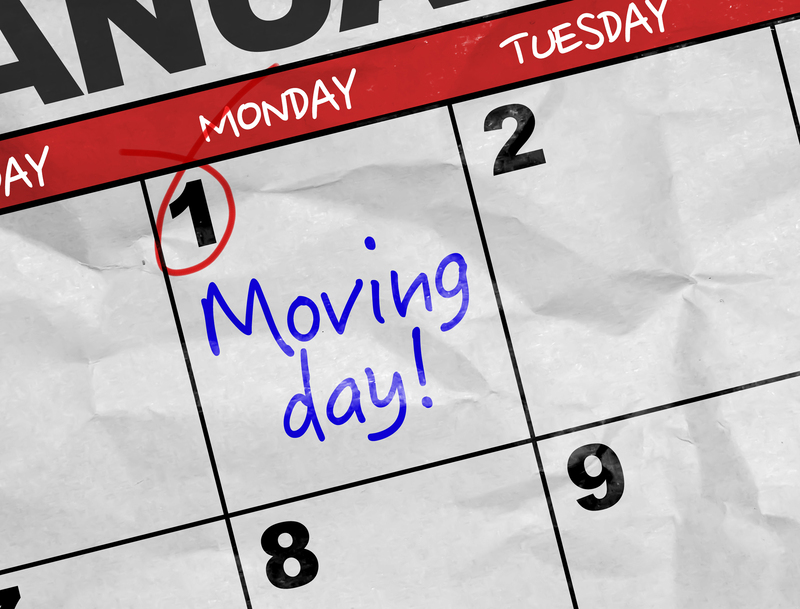Effective Packing Hacks to Simplify Your Move
Posted on 04/06/2025
Effective Packing Hacks to Simplify Your Move
Moving to a new home can be both exciting and overwhelming. Packing up all of your belongings, ensuring their safety, and keeping everything organized may feel like an uphill battle. However, with effective packing hacks, you can simplify your move and reduce the stress commonly associated with relocation. In this comprehensive guide, you'll discover invaluable tips, creative solutions, and proven strategies for a smooth transition.

Why Packing Efficiently Matters During a Move
Packing isn't merely about placing items in boxes--it's about doing so in a way that protects your belongings, saves time and space, and makes unpacking a breeze. Efficient packing methods can save you money by reducing the number of boxes and minimizing the need for extra moving supplies. More importantly, strategic packing keeps your possessions safe and ensures you don't spend hours hunting for essentials when you arrive at your new place.
Pre-Packing Preparation: Setting Yourself Up for Success
Declutter Before You Pack
One of the best packing tips is to declutter. Moving offers a fantastic opportunity to assess what you really need.
- Separate items into keep, donate, sell, or toss piles.
- Be ruthless--if you haven't used it in a year, consider letting it go.
- Donate gently used clothing, kitchenware, and home goods to local charities.
- Sell valuable or gently-used items online or via a garage sale before the move.
Gather All the Right Packing Supplies
Stock up on sturdy boxes, packing tape, bubble wrap, stretch wrap, markers, and specialty containers. By having these essential supplies on hand, you'll avoid interruptions during packing.
- Use small boxes for heavy items like books; save large boxes for lighter, bulkier items.
- Wardrobe boxes are perfect for hanging clothes and linens.
- Protect delicate items with packing paper, towels, or old t-shirts as padding.
Strategic Packing Hacks for a Simpler Move
1. Start Packing Ahead of Time
A little work each day can vastly reduce last-minute stress. Begin with items you use least, such as seasonal decor or out-of-season clothing.
- Pack non-essential rooms first, such as guest rooms or storage areas.
- Label everything clearly! Write the room and contents on each box, and consider color-coding for quick identification.
2. Utilize Space Inside Your Belongings
Maximize space by packing efficiently inside pots, shoes, and storage containers.
- Fill pots with spices, dish towels, or utensils.
- Place socks and small accessories inside shoes to prevent deformation and save space.
3. Keep Hardware and Small Pieces Safe
Furniture parts, screws, and wires can easily get lost. Here's what to do:
- Bag and label small hardware in ziplock bags.
- Tape bags securely to the underside of furniture or the inside of a corresponding box.
4. Protect Fragile Items With Repurposed Materials
- Wrap glasses and dishes in clean socks, t-shirts, or towels instead of bubble wrap.
- Layer plates vertically, like records, to minimize the risk of breaking.
5. Use Suitcases and Laundry Baskets Smartly
- Pack heavy books, electronics, or valuable items in rolling suitcases for easy transport.
- Laundry baskets can carry oddly shaped or soft items such as pillows and bedding.
Room-by-Room Packing Hacks
Packing the Kitchen
- Wrap cutlery trays in plastic wrap so you can grab and go.
- Use pot holders and oven mitts to protect fragile items.
- Use liquor store boxes with dividers to safely transport glass bottles and stemware.
Packing the Bedroom
- Keep clothes on hangers! Slip garbage bags over grouped clothing for quick and wrinkle-free transport.
- Pack bedding and soft items in vacuum-seal bags to save space.
Bathroom Essentials
- Seal bottles tightly and store upright in a plastic bin to avoid spills.
- Keep a small overnight bag with toiletries and a change of clothes for your first day.
Smart Labeling and Inventory Tips
Label Boxes Like a Pro
- Color-code each box by room with colored tape or markers for instant recognition.
- Write a brief inventory on each box--no more digging through piles for missing items!
Keep an Inventory List
- Create a digital or paper list of all the boxes and their contents.
- Snap pictures of electronics setups or box contents for easy reassembly and unpacking.
Special Packing Hacks for Different Item Types
Electronics and Cables
- Use original boxes when possible for electronics.
- Wrap cables with Velcro ties and label them with masking tape.
- Take a photo of the cable arrangement before disconnecting devices for reference.
Delicate Art, Mirrors, and Frames
- Wrap artwork and mirrors in bubble wrap and reinforce corners with cardboard.
- Mark these boxes as FRAGILE on all sides and indicate which way is up.
Important Documents and Valuables
- Keep passports, insurance papers, valuables, and essential medications with you at all times.
- Store these in a lockable file box or bag for easy access and peace of mind.
Moving Day Essentials: What Not to Pack
Some items should be packed last or kept in your personal bag to ensure immediate access upon arrival.
- Medications and chargers
- Snacks, water, and pet supplies
- Basic cleaning supplies
- First-night bedding and a few utensils
- Essential tools for furniture assembly
Unpacking Hacks to Make Settling In Easier
Unpacking doesn't have to be chaotic. These unpacking tips will ease your transition:
- Start with essentials: kitchen items, bedding, and toiletries.
- Assemble furniture first so you have space for organizing.
- Unpack one room at a time so you're not surrounded by half-opened boxes.
- Recycle packing materials as you go for a clutter-free home.
Eco-Friendly Packing Tips
- Borrow or rent sturdy plastic moving boxes for a sustainable move.
- Reuse newspapers, towels, and containers instead of single-use packing materials.
- Donate or responsibly dispose of items instead of sending them to the landfill.

Frequently Asked Questions About Effective Packing Hacks
How far in advance should I start packing for a move?
Ideally, start packing three to four weeks before your move. Begin with items you rarely use and progress towards daily essentials.
What items should I avoid packing in a moving truck?
- Perishables, plants, flammable or explosive items, and valuables (like cash and jewelry) should always travel with you.
How can I keep my fragile items safe?
Double-wrap breakables in soft materials, use sturdy boxes, pad empty spaces, and mark boxes as fragile and this side up.
What's the most efficient way to pack clothes?
- Use suitcases and wardrobe boxes, or roll clothes to save space. Keep them on hangers and cover with plastic for a wrinkle-free move.
Conclusion: Smart Packing Makes for an Easier Move
Tackling a move doesn't need to be stressful. By incorporating these packing hacks to simplify your move, you'll save time, reduce hassle, and ensure your precious possessions arrive safe and sound. Smart organization, protective techniques, and a proactive approach will streamline your relocation and help you start your next chapter with ease.
Ready to make your next move the easiest one yet? Bookmark these effective packing tips for your upcoming relocation, share them with friends and family, and transform your moving process into a smooth, stress-free adventure!



